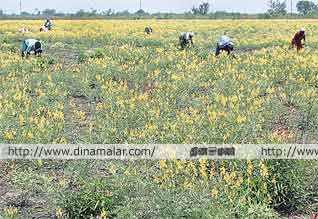
Buildings with glass facades are energy guzzlers says T.V. Ramachandra of the Centre for Ecological Sciences, IISc, Bengaluru.— photo: M. Karunakaran
At nearly 39 million tonnes of carbon dioxide equivalent, Delhi has the highest greenhouse gases footprint in the country. Greater Mumbai and Chennai follow Delhi with 23 million tonnes and 22 million tonnes respectively. Ahmedabad accounts for the least (9 million tonnes) GHS footprint among the seven Indian cities studied by a team of researchers at IISc,
Despite the total GHS footprint being 17 million tonnes lesser than Delhi, Chennai has the highest per capita emission of carbon dioxide equivalent — 4.79 tonnes. Kolkata follows Chennai with 3.29 tonnes of carbon dioxide equivalent. Chennai also emits the highest carbon dioxide equivalent per GDP — 2.55 tonnes carbon dioxide equivalent per lakh rupees.
The results, based on the 2009-2010 data, were published recently in the journal Renewable and Sustainable Energy Reviews by a team led by Prof. T.V. Ramachandra of the Energy &Wetlands Research Group, Centre for Ecological Sciences, IISc, Bengaluru.
The paper has looked into all sources of greenhouse gas emissions — transportation, domestic sector, electricity consumption, industry, agriculture and livestock, and solid and liquid waste.
A sector-wise analysis revealed that transportation turned out to be biggest source of emission in cities where rail transportation was either absent or was just being put in place. Of the seven cities studied, Delhi turned out to be the highest emitter of greenhouse gases from the transportation sector. Vehicles in Delhi emitted over 12 million tonnes of greenhouse gases during the study period.
But as percentage contribution from all sources in a city, transportation in Delhi accounted for 32 per cent of greenhouse gases emission. It was 57 per cent in Hyderabad, 43 per cent in Greater Bengaluru, and 25 per cent in Ahmedabad.
“Lack of appropriate public transport system in these cities [Bengaluru and Hyderabad] and haphazard growth due to unplanned urbanisation has led to large-scale usage of private vehicles,” notes the paper.
Contrast this with the three cities — Kolkata, Greater Mumbai and Chennai — where rail forms the backbone of transportation. Based on percentage contribution from all sources, transportation accounted for just 13 per cent in Kolkata, 17.4 per cent in Greater Mumbai and 19.5 per cent in Chennai.
The domestic sector was the next biggest contributor of greenhouse gases emissions. Electricity consumption for lighting and other household appliances, consumption of fuel for cooking were the major sources of domestic emissions. Again, Delhi topped the list with 11.6 million tonnes of gases emitted, which is 30 per cent of the total emissions from all sources in the city.
Chennai comes second with 8.6 million tonnes, which is 39 per cent of the total emissions by the city. Greater Mumbai is less than half with 8.4 million tonnes but 19 per cent of its total emissions. Greater Bengaluru and the other two cities — Hyderabad and Ahmedabad — account for half and one-fourth of Chennai’s respectively.
When seen as percentage contribution from all sources in a city, the domestic sector emerged as the biggest contributor of emissions in all the three cities where rail formed the backbone of transportation — Kolkata (43 per cent), Chennai (39 per cent) and Greater Mumbai (37 per cent).
Electricity for commercial and other services such as street lighting and railways, accounts for 15-24 per cent of total emissions by cities except in the case of Hyderabad and Ahmedabad.
“Buildings with glass façade are energy guzzlers. These buildings were meant for European countries,” said Dr. Ramachandra. “If normal buildings consume 1,300-1,500 units per person per year, those with glass façade consume 14,000-15,000 units per person per year.”








